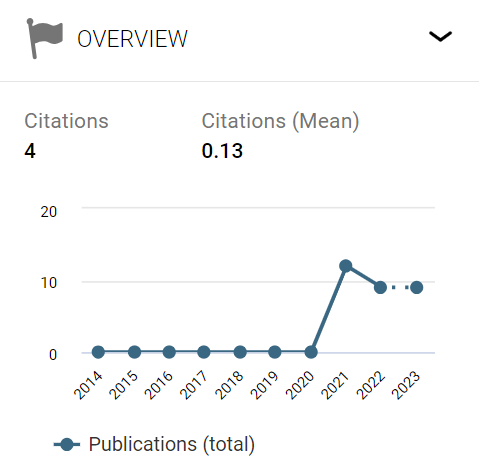Kematian Yang Mematikan: Keberhasilan Misi Simson dalam Hakim-hakim 16
DOI:
https://doi.org/10.52849/apokalupsis.v14i2.90Keywords:
Samson;, death;, Judges;, biblical theology;, narrativeAbstract
Samson was one of the judges who ruled Israel in the pre-monarchy era. He was called to carry out a mission, namely to start saving Israel from the Philistines. His personal uniqueness lay in his superpowers, apostolic status, and a fleshly controlled lifestyle. Not a few writers have observed it and concluded that its mission failed. However, did Samson really fail because his lifestyle was not ideal? This article proves that Samson's mission was not a failure even though his motivation and methods were not ideal, because there is God's intervention in it. Through the method of narrative literary exegesis which involves structural analysis, style analysis, editorial analysis, exegetical analysis and theological analysis, the fact is that Samson's mission was successful. The defeat of the Philistines and the fall of Dagon's temple in 16:23-31 has been stated implicitly in 16:1-3. The number of enemies killed is increased. This data shows that Samson's mission was a success.
References
Ball, R. (2014). Christian Leadership And The Crippling Effect Of Narcissism: A Historical Intertexture Analysis Of Judges 13-16. Journal of Biblical Perspectives in Leadership, 6(1), 16–26.
Bar, S. (2020). The Death of Samson. Old Testament Essays, 33(1), 162–174.
Barrick, W. (1976). Samson’s Removal of Gaza’s Gates. Journal of the Near East Archaeological Society, 83–93.
Catino, M. (2015). Tribal Capabilities and Warfare: The Case of Ancient Israel. The Saber and Scroll Journal, 4(1).
Galpaz-Feller, P. (2006). ‘Let my Soul Die with the Philistines’ (Judges 16.30). Journal for the Study of the Old Testament, 30(3), 315–325.
Gatgounis II, G. J. (1997). The Role Of The Philistines In The Hebrew Bible. Teresianum, 48(1), 373–385.
Gesenius, W., Kautzsch, E., & Cowley, A. E. (2006). Gesenius’ Hebrew Grammar. Courier Corporation.
Gooding, D. W. (1982). The Composition of the Book of Judges. Eretz-Israel, 16, 70–79.
Hackett, J. A. (2004). Violence and Women’s Lives in the Book of Judges. Interpretation: A Journal Of Bible And Theology, 58(4), 356–364.
Harris, R. L., Archer Jr., G. L., & Waltke, B. K. (2003). Theological Wordbook of the Old Testament. Moody Publishers.
Hart, T. (2020). Symbolism of Temple Gates in Ancient Israel. Studia Antiqua, 19(1), 18–30.
Herbst, J. W. (2019). Valuing Leadership and Love: David exceeding Samson. Journal for the Study of the Old Testament, 43(3), 491–505.
I’jam, D. M. M., & Fadhil, Z. A. (2016). Chiasmus as a Stylistic Device in Donne’s and Vaughan’s Poetry. Journal of Education and Practice, 7(26), 43–52.
Johnson, B. J. M. (2015). A Nazorean and a Nazirite: Jesus and Samson in Matthew 1-2. The Expository Times, 126(12), 586–592.
Joüon, P., & Muraoka, T. (2006). A Grammar of Biblical Hebrew. Editrice Pontificio Intituto Biblico.
Kittel, R., Elliger, K., Rudolph, W., Ruger, H. P., & Weil, G. E. (1997). Biblia Hebraica Stuttgartensia: Editio funditus renovata, fünfte verbesserte Auflage. Deutsche Bibelgesellschaft.
Klein, L. R. (1988). The Triumph of Irony in the Book of Judges. In Bible and Literature Series (Vol. 14). Sheffield.
Koehler, L., & Baumgartner, W. (2017). The Hebrew And Aramaic Lexicon Of The Old Testament (J. J. Stam (ed.); CD-ROM). Brill.
Kozlovic, A. K. (2012). “Seven Green Withs that were Never Dried”: Judges 16:7. Cecil B. DeMille’s Rendition...Valid, Authentic, Artistic? American Journal of Biblical Theology, 13(14).
le Roux, M. (2020). ‘To see or not to see, that is the question’: Judges 13–16. Pharos Journal of Theology, 101, 1–9.
Osborne, G. (2018). Spiral Hermeneutika: Pengantar Komprehensif bagi Penafsiran Alkitab. Momentum.
Pratt, R. (2013). Ia Berikan Kisah-Nya. Momentum.
Reiss, M. (2014). Samson: The Only Nazarite in the Hebrew Bible and His Women! Scandinavian Journal of the Old Testament, 28(1), 133–146.
Roskoski, J. (2015). Samson and the Gazite Harlot: The Significance of Judges 16:1-3. American Journal of Biblical Theology, 16(7).
Ross, J. L. (2021). Type-Casting The Samson Family: Genesis Parodies In Judges 13–14. JETS, 64(2), 237–252.
Ryan, R. (2007). Judges (Readings: A New Biblical Commentary). Sheffield Phoenix Press.
Sasson, J. M. (2020). A Gate in Gaza: An Essay on the Reception of Tall Tales. Biblical Narratives, Archaeology, and Historicity, 176–189.
Shamase, M. Z. (2021). Lessons from the life of Samson on battling with harassing iniquities. Pharos Journal of Theology, 102, 1–9.
Smith, M. J. (2005). The Failure of the Family in Judges, Part 2: Samson. Biblioteca Sacra, 162, 424–436.
Spronk, K. (2019). Judges (Historical Commentary on the Old Testament). Peeters Publishers.
Waltke, B. K. (1990). An Introduction To Biblical Hebrew Syntax. Eisenbrauns.
Way, K. C. (2014). The Literary Structure of Judges Revisited: Judges as a Ring Composition. In B. T. Arnold, N. L. Erickson, & J. H. Walton (Eds.), Windows to the Ancient World of the Hebrew Bible (pp. 247–260). Penn State University Press.
Webb, B. G. (2012). The Book of Judges - New International Commentary On The Old Testament. Eerdmans.
Willmington, H. (2018). The Chapters of Judges. An Alliterated Outline for the Chapters of the Bible, 8, 8–9.
Wilson, S. M. (2014). Samson the Man-Child: Failing to Come of Age in the Deuteronomistic History. Journal of Biblical Literature, 133(1), 43–60.
Younger Jr., K. L. (2021). The NIV Application Commentary: Judges, Ruth. Zondervan.
Downloads
Published
How to Cite
Issue
Section
License

This work is licensed under a Creative Commons Attribution-ShareAlike 4.0 International License.









